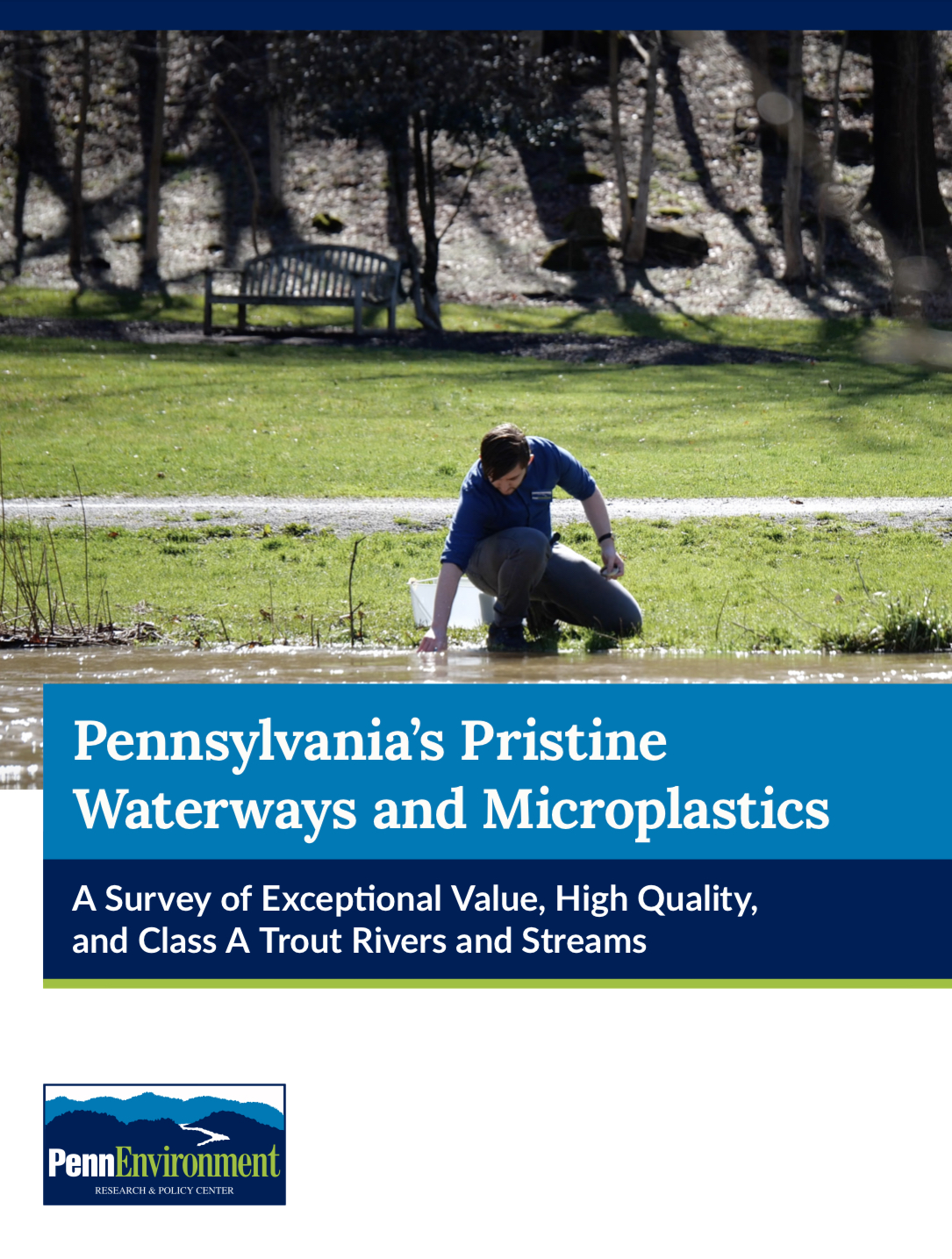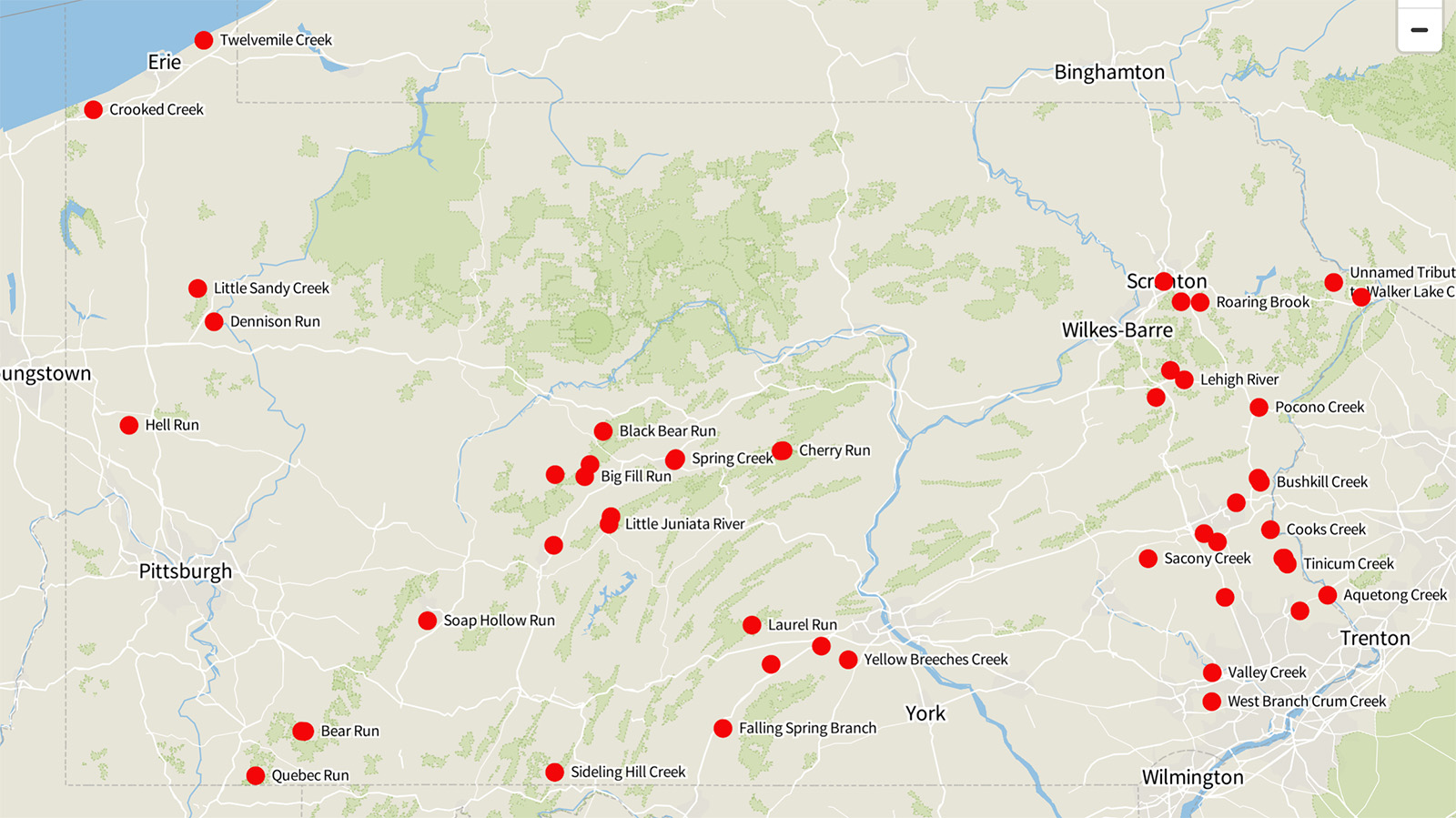
New report: Microplastics found in Pennsylvania’s cleanest, most protected streams
Study finds that not even the most protected streams are safe from plastic pollution
PHILADELPHIA — Microplastic contamination was found in all samples taken from 50 streams categorized as Pennsylvania’s cleanest and most ecologically important, according to a new report entitled Pennsylvania’s Pristine Waterways and Microplastics: A Survey of Exceptional Value, High Quality, and Class A Trout rivers and streams released on Wednesday.
“The results of this study should set off alarms for all Pennsylvanians who love our state’s rivers and streams,” said Faran Savitz, zero waste advocate at the PennEnvironment Research & Policy Center. “Finding plastic pollution at waterways considered Pennsylvania’s cleanest and most ecologically important likely means that no river, lake, or stream is safe from this increasingly common contaminant.”
The study was conducted by the PennEnvironment Research & Policy Center using methodology developed by the National Oceanic and Atmospheric Administration (NOAA) and is the first comprehensive study of microplastic pollution in Pennsylvania waterways historically categorized as the cleanest and most environmentally pristine.
The tested waterways were all classified as Exceptional Value (EV), High Quality (HQ), or Class A Coldwater Trout streams by the Department of Environmental Protection (DEP). The DEP describes these classifications as: “standards, which are designed to safeguard Pennsylvania’s streams, rivers and lakes”
“If we are serious about protecting our children and our communities, we need to get serious about reducing the amount of plastic ending up in our state’s waterways,” State Democratic Leader Joanna McClinton (Philadelphia./Delaware) said. “Microplastics harm our wildlife, contaminate our food, and risk our neighbors’ health. We know that taking steps toward reducing our reliance on single use plastics can impact the health of our communities.”
Microplastics are pieces of plastic less than 5 millimeters in diameter, which is smaller than a grain of rice. A full list of the types of microplastics at each sampling location can be found in the report. Results for each waterway and photos from sampling can be found in this map from the PennEnvironment Research & Policy Center.
“Microplastic pollution is widely reported being found from the peaks of Mount Everest to the depths of the Marianas Trench, but what is less-known and understood is its pervasiveness in our freshwater systems, those very systems we rely on for life and economic development,” noted Dr. Sherri Mason from Penn State Behrend, a nationally recognized expert on freshwater ecosystems and microplastic pollution. “We find plastic pollution everywhere and that it affects everyone. We need that fact to make its way out to the light, to common knowledge and awareness.”
Along with the help of concerned citizens and elected officials across Pennsylvania, PennEnvironment Research & Policy Center staff collected over 300 water samples as part of the citizen-science project to identify plastic pollution in their local EV, HQ and Class A Coldwater Trout waterways. Samples were analyzed for microplastics at the Academy of Natural Sciences of Drexel University with the assistance of the Academy’s undergraduate researchers. Microplastics were found in every waterway sampled.
“This is an important study that illustrates that plastic pollution is in the best of the best of healthy Pennsylvania streams and that it’s so important to reduce our plastic footprint! We all need to do our part,” said Dr. David Velinsky, Senior Scientist at the Academy of Natural Sciences and Head of the Biodiversity, Earth and Environmental Science Department at Drexel University.
The report outlines a broad range of policy solutions to tackle the problem. These include passing single-use plastic bans at the local, state, and federal levels, introducing producer responsibility provisions like a statewide bottle deposit, updating Pennsylvania’s cornerstone recycling law Act 101, and opposing new petrochemical subsidies.
Concern around plastic and microplastic pollution has led to widespread local action in Pennsylvania. Twelve municipalities, including eight in 2022 alone, have passed laws tackling single-use plastics. They include the Commonwealth’s two largest cities, Philadelphia and Pittsburgh, and cover over 16% of the population.
“There is no silver bullet solution for the mini-menace of microplastics” said Savitz. “Fundamentally, we need to cut plastic pollution off at the source and change the way society deals with our waste if we want to protect our environment and our health from this threat.”
####
PennEnvironment Research & Policy Center is dedicated to protecting our air, water and open spaces. We investigate problems, craft solutions, educate the public and decision-makers, and help the public make their voices heard in local, state and national debates over the quality of our environment and our lives. For more information, visit www.EnvironmentAmerica.org/Pennsylvania/Center.


